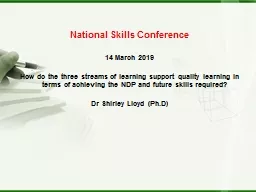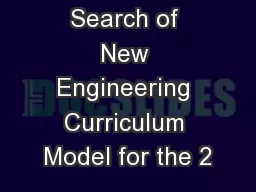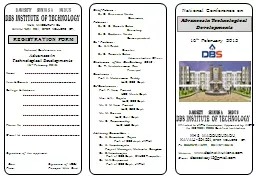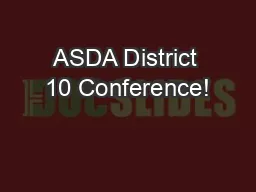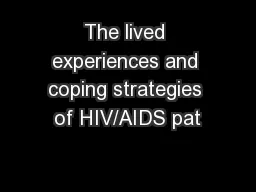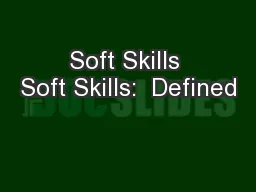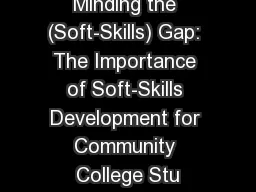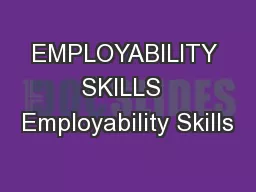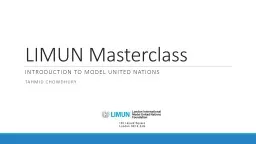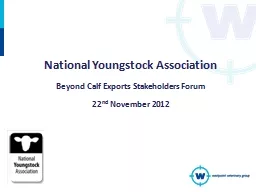PPT-National Skills Conference
Author : calandra-battersby | Published Date : 2020-04-05
14 March 2019 How do the three streams of learning support quality learning in terms of achieving the NDP and future skills required Dr Shirley Lloyd PhD The NDP
Presentation Embed Code
Download Presentation
Download Presentation The PPT/PDF document " National Skills Conference " is the property of its rightful owner. Permission is granted to download and print the materials on this website for personal, non-commercial use only, and to display it on your personal computer provided you do not modify the materials and that you retain all copyright notices contained in the materials. By downloading content from our website, you accept the terms of this agreement.
National Skills Conference : Transcript
Download Rules Of Document
" National Skills Conference "The content belongs to its owner. You may download and print it for personal use, without modification, and keep all copyright notices. By downloading, you agree to these terms.
Related Documents

